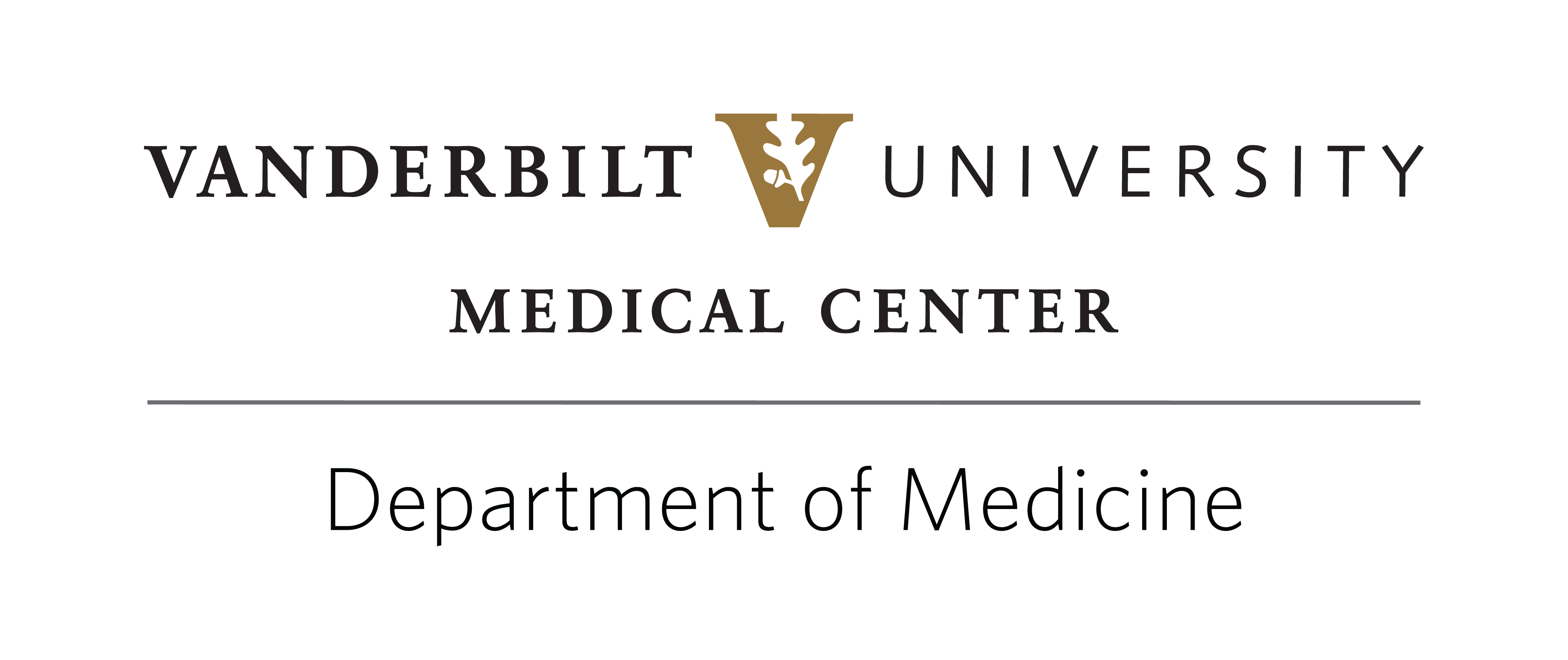Section of Hospital Medicine
Interdisciplinary Care Program
About the Vanderbilt Interdisciplinary Care Program
Components of the program include:
- Consistent Team through the spectrum of care: Patients enrolled in the program have the same care team every time they are admitted in the hospital, in urgent care clinic or primary care clinic, to provide consistency throughout their engagement with the health system
- Care Plan: A patient centered care plan is created that identifies patient’s needs and identified barriers to care. This care plan serves as the blueprint for care when the patient is admitted through the hospital or seen in the clinic
- Data-driven population outcome improvement: The team proactively uses internal Vanderbilt EMR data and state-wide data in targeting patients who have been in and out of the hospital. We use this information to focus our efforts on patients who need the greatest help
- Collaborative team meetings: The entire team meets for weekly huddles, and more frequently, when necessary, to discuss patient needs and develop consensus on the patient's plan of care
Patients, please visit the VICP program page at VanderbiltHealth.com.
What is the High Need, High Care Population?
The High Need, High Care Population is a new concept, and taxonomy is evolving. A 2014 statistical brief by the Agency for Healthcare Research and Quality reported that 1% of patients accounted for 22.8% of total health care expenditures.
Many institutions have undertaken efforts to identify these “high need” individuals, with the goal of reducing unnecessary utilization and costs through structured interventions. The National Academy of Medicine has identified three criteria that may inform identification of high need patients:
- Total accrued health care costs
- Intensity of care utilized for a given period
- Functional limitations
A high need population can be fluid, as costs and intensity of care vary over time based on disease activity and psychosocial factors. Complex care is the framework for taking care of the high need population.
Advocated by the Commonwealth Fund and the Robert Wood Johnson Foundation, complex care is a person-centered approach to address the needs of people who experience combinations of medical, behavioral health, and social challenges that result in extreme patterns of healthcare utilization and cost.
References:
Mitchell E. Concentration of Health Expenditures in the U.S. Noninstitutionalized Population, 2014. Statistical Brief #497. November 2016. Agency for Healthcare Research and Quality, Rockville, MD.
National Academy of Medicine (2019, March 25). Effective Care for High Need Patients.
The Commonwealth Fund (2016, November 28). The Playbook: Better Care for People with Complex Needs.
About the Vanderbilt Experience for the High Need, High Care Population
Vanderbilt University Medical Center has developed the Vanderbilt Interdisciplinary Care Program (VICP) to provide complex care for high-need patients. VICP defines the high need population based on the Hierarchical Condition Categories, which Medicare uses to project the expected risk and future annual costs of care. The HCC score is easily available in Epic.
Patients who have HCC Scores of 3.0 and above, or 2.0-2.9 with 2 unplanned admissions at VUMC are eligible for the program. Patients admitted under the Hospital Medicine service are regularly screened for enrollment to VICP. Based on internal data, this population includes approximately 1% of all patients seen at VUMC in a 6-month period and represents over 10% of all inpatient admissions and total charges. (1)
VICP employs multi-layered, patient-centered strategies to improve clinical care for VUMC’s high need population and seeks to understand which interventions decrease hospital utilization and improve clinical outcomes. Preliminary data demonstrates a 41% decrease in admissions and 38% decrease in ED visits among patients in the VICP program, compared to these patients’ healthcare utilization prior to enrollment.
Patients meeting this criterion are offered to enroll in either the primary hospital program (PHP) or the primary care program. The primary hospital provider program allows the patient to have a consistent inpatient team and maintain their primary care provider especially if they have long-standing relationships with their PCP, or they live a significant distance from Vanderbilt. In the primary care program, the VICP takes care of the whole continuum of care for this population.
References:
(1) Tableau. Vanderbilt Medical Center Data. Retrieved December 2018.
(2) Tableau. Vanderbilt Medical Center Data Retrieved March 2019.
Current Initiatives
Collaboration with insurance: We are currently working with our payors to create a model of care for this population. We hope to improve value of care for this population by identifying shared outcomes between the patient, the care team, and the payor, and decrease cost by improving coordination of care for this group
Interdisciplinary telehealth: For select patients actively engaged with the VICP program, we are implementing a telehealth initiative using an interdisciplinary approach. Our doctors, APPs, case managers, social workers and pharmacists will be regularly interacting with our population through video conferencing.
The goal of telehealth is to improve access to a population that has difficulty getting to clinic appointments and routine medical care either because of distance, or because of transportation availability.
Contact Us
Phone: 615-875-4875
Email: vicp@vumc.org
